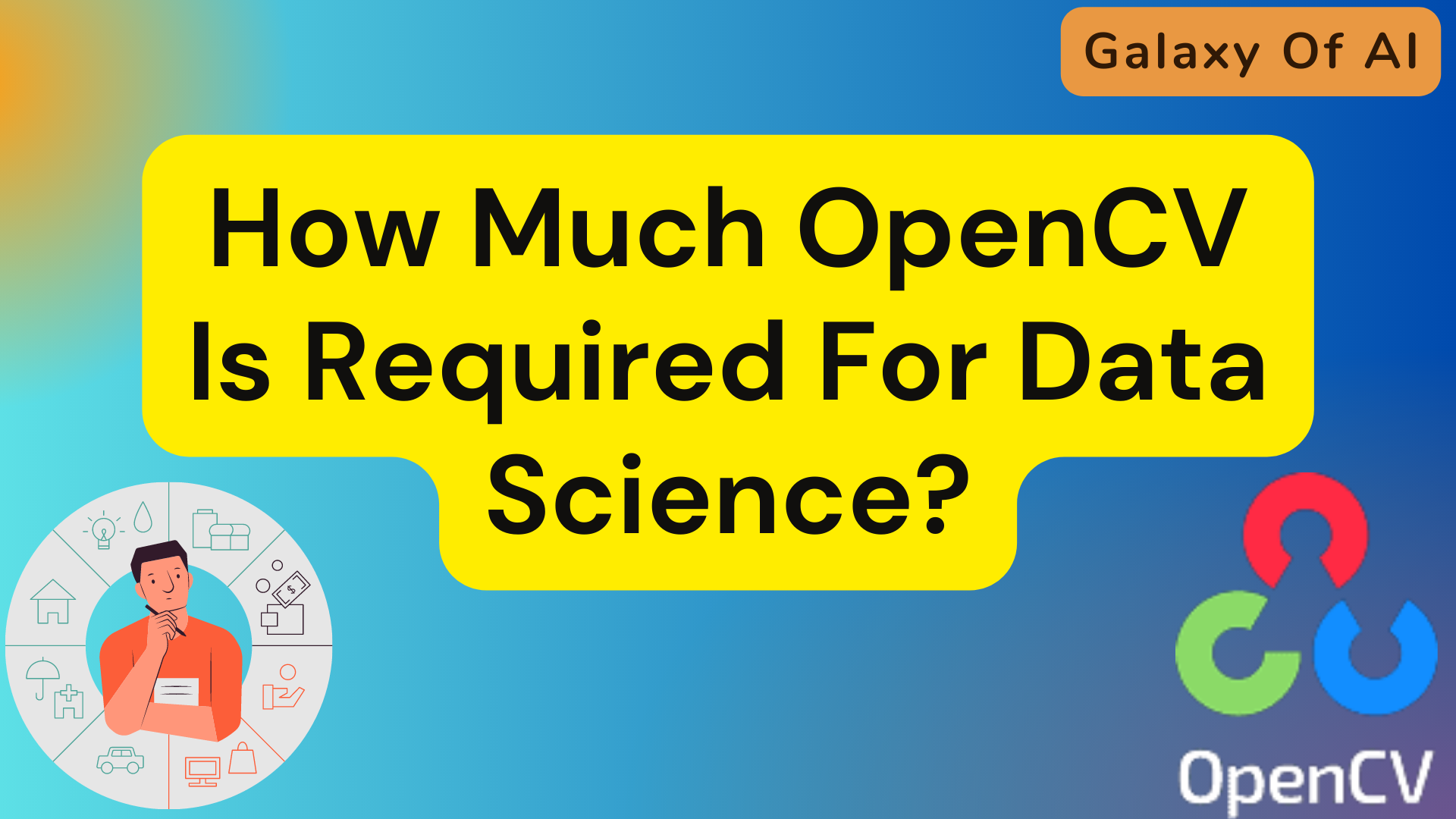Hello Learners…
Welcome to my blog…
Table Of Contents
- Introduction
- What is OpenCV?
- How Much OpenCV Is Required For Data Science?
- Summary
- References
Introduction
In this post, we discuss How Much OpenCV Is Required For Data Science? and we are trying to understand how much OpenCV we have to learn as data scientists or machine learning engineers.
What Is OpenCV?
OpenCV, an abbreviation for “Open Source Computer Vision,” resembles a toolkit that enables computers to comprehend and manipulate images and videos.
It empowers computers to identify objects in images, perform modifications to visual content, and execute various activities connected to comprehending visual data.
OpenCV proves valuable in scenarios where we require computers to engage with images and videos – tasks like recognizing faces, enhancing picture quality, or aiding machines in perceiving their surroundings.
How Much OpenCV Is Required For Data Science?
OpenCV (Open Source Computer Vision) stands as a potent library that furnishes tools and functions to accomplish diverse computer vision tasks, including image and video processing, object detection, image recognition, and more.
While OpenCV isn’t obligatory for all dimensions of data science, its utility can be substantially contingent upon the particular tasks and projects you engage in.
Here’s some task of how OpenCV fits into the realm of data science:
Image Data Processing:
- In data science projects, professionals extensively utilize OpenCV for processing image data.
- When our tasks involve image-related work, such as cleaning, enhancing, resizing, or extracting features from images, leveraging OpenCV’s functions can result in significant time and effort savings.
Computer Vision Tasks:
- When our data science projects involve computer vision tasks like object detection, face recognition, optical character recognition (OCR), or even building machine learning models that take image data as input, OpenCV provides a wide range of pre-built tools and techniques.
Feature Extraction:
- OpenCV can help us to extract various features from images, such as edges, corners, textures, and more. Machine learning models can then utilize these features as inputs.
Data Augmentation:
- In many machine learning projects, data augmentation is crucial to prevent overfitting and improve model generalization.
- We can use OpenCV to perform various data augmentation techniques on image datasets.
Visualization:
- Data visualization is a key aspect of data science. when we are working with image data, OpenCV can help us visualize and present our results effectively.
Image Preprocessing:
- Preprocessing is often required to clean and prepare image data for analysis.
- OpenCV provides functions for tasks like denoising, thresholding, and image smoothing.
However, it’s important to note that while OpenCV is valuable for specific tasks within data science, it might not be necessary for every data science project.
If your projects focus primarily on structured data, numerical analysis, text mining, and statistical modeling, OpenCV might not be a central requirement.
Summary
In summary, the requirement of OpenCV for your data science work varies based on your project’s nature. If you’re handling image data, performing computer vision tasks, or engaging in any type of visual data analysis, having a solid grasp of OpenCV’s concepts can enrich your toolkit significantly. It’s advisable to possess a foundational understanding of OpenCV and its capabilities, even if it doesn’t serve as your primary focus within the realm of data science.
Also, you can refer,
Happy Learning And Keep Learning…
Thank You…
